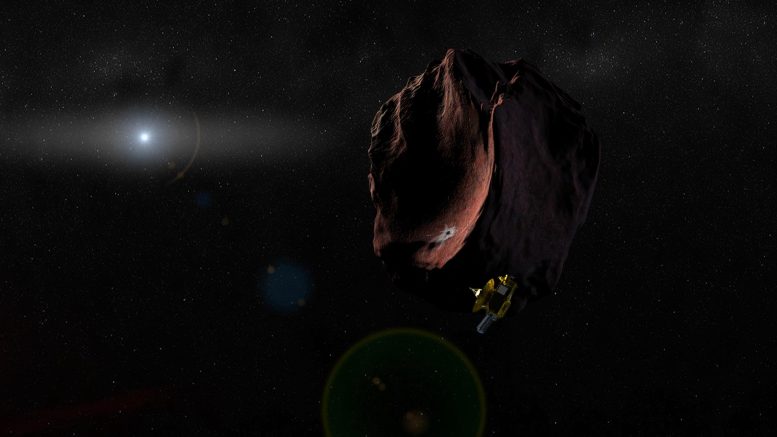
Artist’s impression of the New Horizons spacecraft encountering a Kuiper Belt Object. Credit: Johns Hopkins University Applied Physics Laboratory/Southwest Research Institute (JHUAPL/SwRI)
In the near future, astronomers will benefit from the presence of next-generation telescopes like the James Webb Space Telescope (JWST) and the Nancy Grace Roman Space Telescope (RST). At the same time, improved data mining and machine learning techniques will also allow astronomers to get more out of existing instruments. In the process, they hope to finally answer some of the most burning questions about the cosmos.
For instance, the Dark Energy Survey (DES), an international, collaborative effort to map the cosmos, recently released the results of their six-year survey of the outer Solar System. In addition to gathering data on hundreds of known objects, this survey revealed 461 previously undetected objects. The results of this study could have significant implications for our understanding of the Solar System’s formation and evolution.
The research was led by Dr. Pedro Bernardinelli, a Ph.D. candidate in the Department of Physics & Astronomy at the University of Pennsylvania (UPenn). He was joined by Gary Bernstein and Masao Sako (two professors with the Dept. of Physics and Astronomy at UPenn) and other members of the DES Collaboration. Beginning in 2013, DES seeks to ascertain the role Dark Energy has played (and continues to play) in the expansion and evolution of the cosmos.
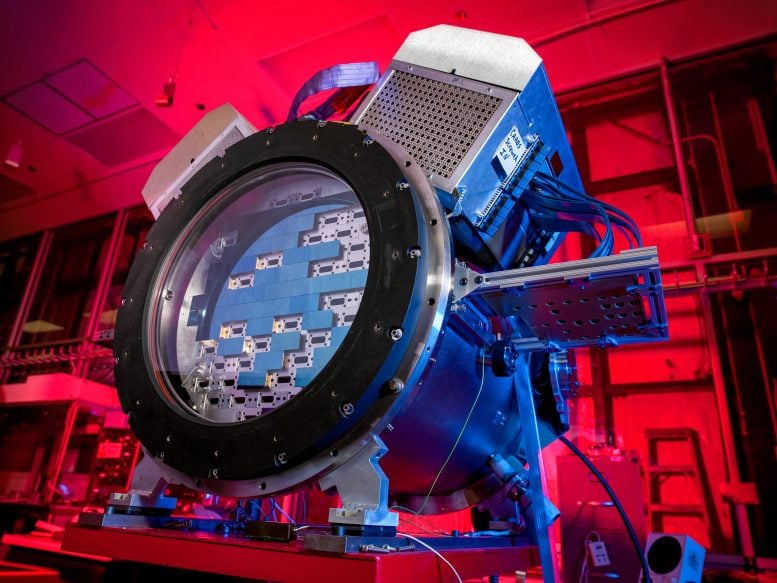
The Dark Energy Survey camera (DECam) at the SiDet clean room. The Dark Energy Camera was designed specifically for the Dark Energy Survey. It was funded by the Department of Energy (DOE) and was built and tested at DOE’s Fermilab. Credit: DOE/FNAL/DECam/R. Hahn/CTIO/NOIRLab/NSF/AURA
Between 2013 and 2019, DES used the 4m Blanco Telescope at the Cerro Tololo Inter-American Observatory (CTIO) in Chile to study hundreds of millions of galaxies, supernovae, and the large-scale structure of the Universe. While their primary objective is to measure the accelerating rate of cosmic expansion (aka. the Hubble-Lemaître Constant) and the spatial distribution of Dark Matter, the DES Collaboration also reported the discovery of individual TNOs of interest. As Dr. Bernardinelli explained to Universe Today via email:
“One important detail is that when you take an image of the sky, you don’t just see what you’re looking for, but you also see other things that are in the same region of the sky that might be closer or further from your target. So we get to see anything from airplanes to asteroids to TNOs, as well as stars and distant galaxies. So we get to use the data to find other things (in my case, TNOs!)”
Their results were described in a previous study, where the DES Collaboration shared the first four years of data collection (“Y4”). This led to the discovery of 316 individual TNOs of interest and the development of new machine learning techniques for TNO searches. Building on this, the team analyzed the results of the full six years of DES survey data (“Y6”) for TNOs, albeit with some modifications and improvements.
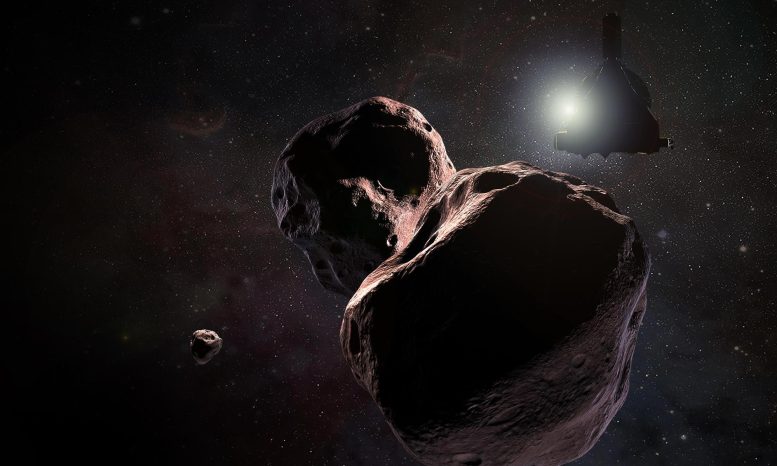
Artist’s impression of NASA’s New Horizons spacecraft encountering 2014 MU69, a Kuiper Belt object that orbits one billion miles (1.6 billion kilometers) beyond Pluto, on January 1, 2019. Credit: NASA/Johns Hopkins University Applied Physics Laboratory/Southwest Research Institute/Steve Gribben
This included adopting the initial version of the TNO pipeline (the one used for Y4) but with a series of algorithmic changes. They also reprocessed the Y4 catalog to detect fainter objects and increased the amount of computing power involved. As a result, the Y6 catalog was considerably larger than the Y4, which constituted the greatest difference (and challenge) between the two surveys. In a sense, said Dr. Bernardinelli, the Y4 search was a dress rehearsal for the Y6 search:
“All of these technological developments have a few unique challenges to DES, as we’re, once again, not a Solar System project, so we had to figure out new ways of searching for these objects (typically, TNO surveys have several images per night, we have just one). I like to describe this problem as “finding a nail in a haystack” mixed with “connect the dots” (we have to find the 10 dots among 100 million that correspond to a single object – these are real numbers!). So everything we did will help future projects that have similar challenges.”
This time, the Collaboration detected 461 previously undetected objects, which brings the total number of TNOs discovered by DES to 777, and the number of known TNOs to nearly 4000. They also gained fresh data on many other objects, including the large comet C/2014 UN271, which Dr. Bernardinelli and co-author Prof. Bernstein discovered in 2014 while examining some of the DES archival images. Said Dr. Bernardinelli:
“All of these technological developments have a few unique challenges to DES, as we’re, once again, not a Solar System project, so we had to figure out new ways of searching for these objects (typically, TNO surveys have several images per night, we have just one). I like to describe this problem as ‘finding a nail in a haystack’ mixed with “connect the dots” (we have to find the 10 dots among 100 million that correspond to a single object – these are real numbers!). So everything we did will help future projects that have similar challenges.”
The implications of this research are both extensive and significant. For starters, astronomers have long suspected that the population of small bodies orbiting beyond Neptune are remnants left over from the formation of the Solar System. What’s more, the current orbital distribution of these objects is the result of the migration of the giant planets to their current orbits. As they migrated, they kicked these objects into the trans-Neptunian region.
“[W]e can use these objects to try to trace back this history. By collecting data on hundreds of these objects, then, we get to ask all sorts of questions, such as “how fast Neptune migrated?” (our data shows a preference for a slower migration) or “is there a ninth planet hiding in the outskirts of the Solar System?” (our data doesn’t show the expected signal, but this doesn’t mean we rule out the idea of Planet 9).”
In short, by having a census of TNOs and constraining their orbital dynamics, astronomers will be able to gain new insight into how our Solar System formed and evolved billions of years ago. That knowledge could also inform our understanding of how habitable systems that give rise to life emerge, thus making it easier for us to find it!
Adapted from an article originally published on Universe Today.

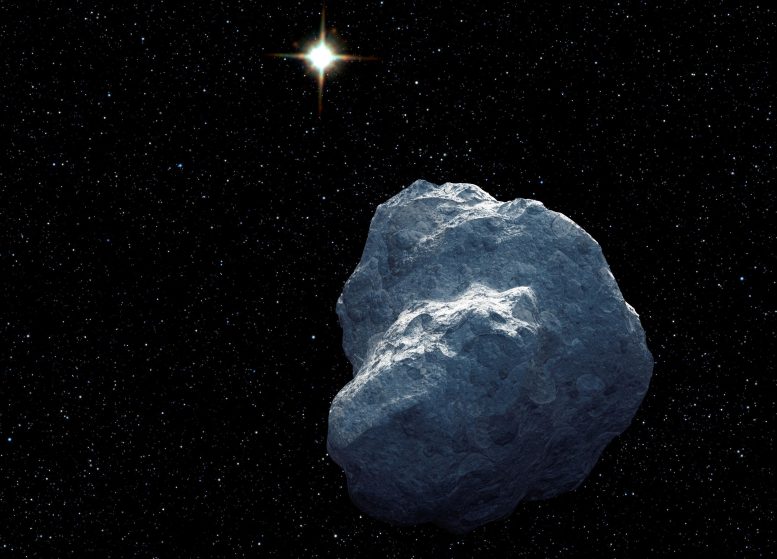







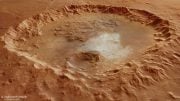
Be the first to comment on "Major 6-Year Search of the Outer Solar System Turns Up 461 New Objects (but No Planet 9)"